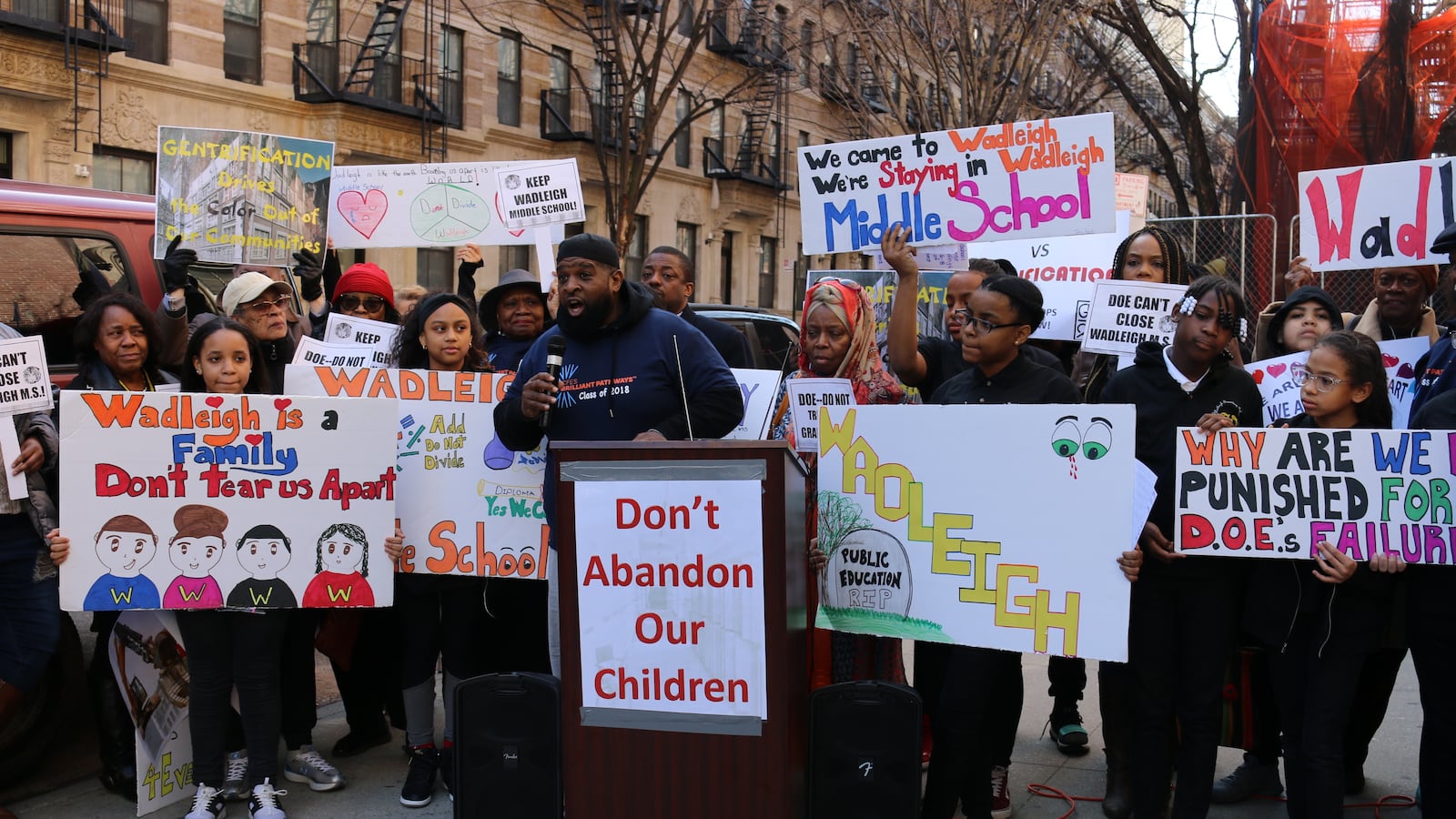In one of his first moves as chancellor, Richard Carranza saved a politically connected performing arts school in Harlem from closure. Now, the education department is moving forward with a leadership shakeup at Wadleigh Secondary School for the Performing Arts in a bid to turn the school around.
Starting Monday, Kyleema Norman — a former principal who now works with low-performing schools in Brooklyn through the city’s Renewal turnaround program — will take the helm of Wadleigh on an interim basis, replacing Daisy Fontanez.
Norman’s task is a steep one. The middle school has long been considered low-performing and has had difficulty attracting students — enrolling fewer than a hundred students in recent years. Since 2014, not a single one of its middle schoolers was considered proficient in math on state tests, and Carranza has said the school’s performance is “not acceptable.”
But despite the school’s performance, Wadleigh has survived at least two attempts to shutter it, owing partly to strong political backing from the NAACP, the Harlem Chamber of Commerce, alumni, and elected officials.
In 2011, when the Bloomberg administration targeted the school for closure, famed philosopher Cornel West and then-public advocate Bill de Blasio rushed to the school’s aid. As mayor, de Blasio’s education department targeted the middle school for closure last year, but Wadleigh was spared after pushback from local officials and members of the school community.
“Chancellor Carranza is very clear that [the education department] is supporting us,” said Norman, the incoming interim principal, adding that she hopes that she is ultimately selected to stay. “I hope to prove myself to be someone of record, and a lasting leader of Wadleigh.”
The decision to save Wadleigh’s middle school could offer a hint that Carranza is more apt to give long-struggling schools a second chance instead of closing them. The schools chief will have to make more of those decisions in the coming year, especially among the 49 other remaining schools in the city’s controversial Renewal turnaround program.
But given Wadleigh’s political history and the fact that Carranza doesn’t yet have a long track record of making closure decisions in New York, it’s difficult to know whether Wadleigh offers any real clues about how Carranza will approach school closures in the future.
As part of the shakeup, the school will join a network of schools supported by New Visions for Public Schools, a nonprofit that helps support and supervise a group of schools. A separate middle school in the same building, Frederick Douglass Academy II, also receives support from New Visions, which will help foster collaboration between the two schools, officials said.
The high school will also receive additional funding for its arts programs, and the school will continue to be in the city’s Renewal program, which gives struggling schools extended learning time, access to additional teacher training, and a collaboration with a nonprofit organization.
Less clear is what benchmarks Wadleigh will be expected to reach for the shakeup to be considered a success. Education department spokesman Doug Cohen pointed to goals the school is supposed to reach as a member of the Renewal program for struggling schools.
Last school year, though, those benchmarks were set so low that Wadleigh’s middle school could actually perform worse on measures including student attendance and reading proficiency and still hit its goals.
Cohen said last year’s goals would remain in place, and, “we’re working with the principal and community to review the metrics and develop new, shared short-and long-term accountability measures that work best for the school.”
Gigs Taylor-Stephenson, president of Wadleigh’s parent association, said the leadership change has left her feeling optimistic.
“We hope that this change is for the best for our children and for the school,” she said, adding that she hopes the new principal brings a more consistent sense of school discipline in managing student behavior. In terms of academics, Taylor-Stephenson said, “We didn’t think expectations were set high enough, and without expectations being set, it was mediocrity.”
Norman emphasized her track record turning around struggling schools. As principal of Brooklyn’s Academy of Urban Planning, she helped usher in double-digit percentage increases in graduation and attendance rates, officials said. And she also noted her arts background, which includes training on the viola and experience with modern, jazz, tap, and African dance.
Aaron Pallas, a professor at Teachers College who has studied the city’s school turnaround efforts, said the leadership shakeup could make a difference, but that might not be enough.
“I think they’re putting a lot of weight on the change in leadership and the idea that a new principal can change the school,” Pallas said. But whether the school would face closure if it doesn’t start improving is far from clear.
“There are some schools that are Teflon coated,” Pallas said.


